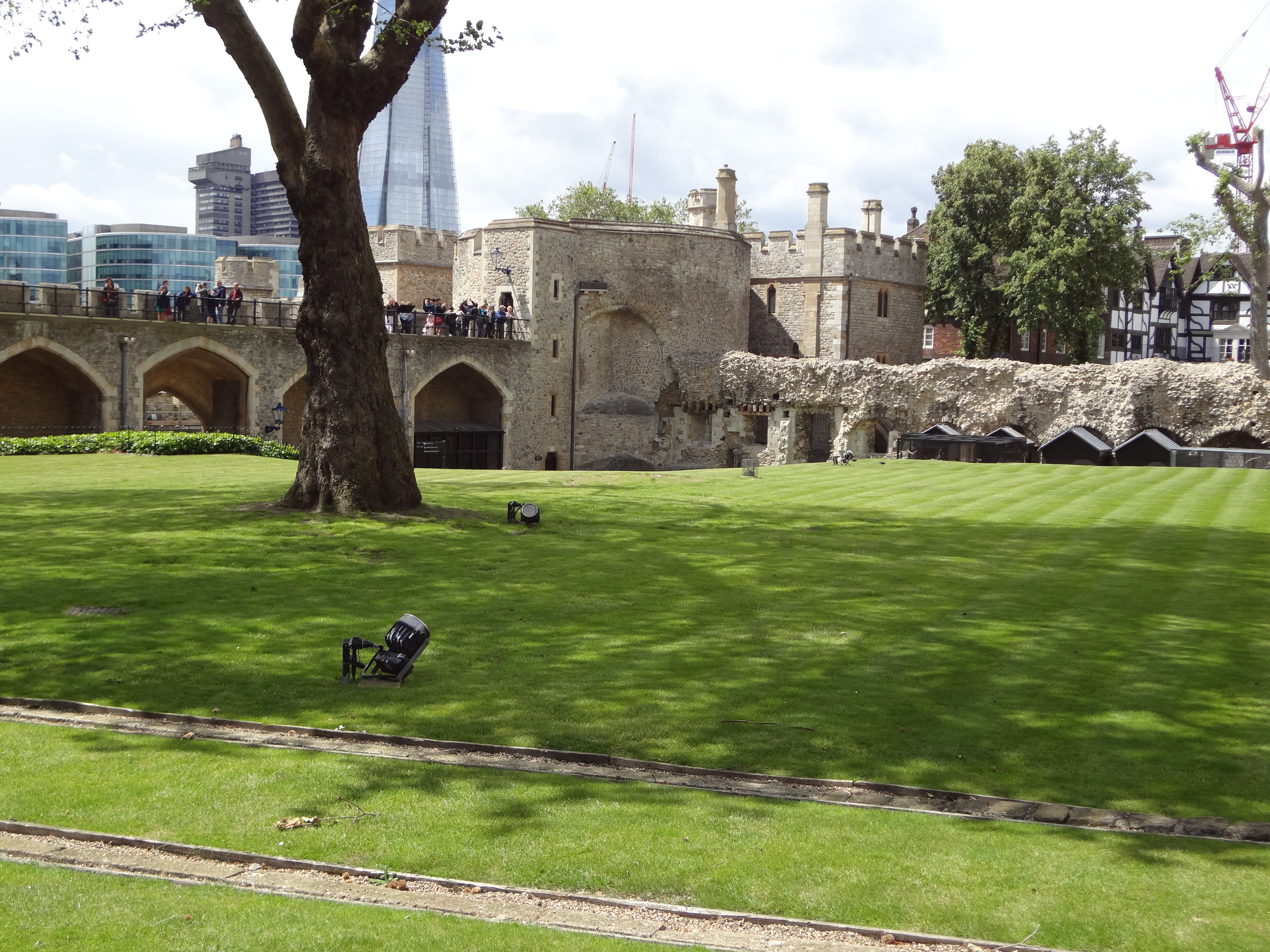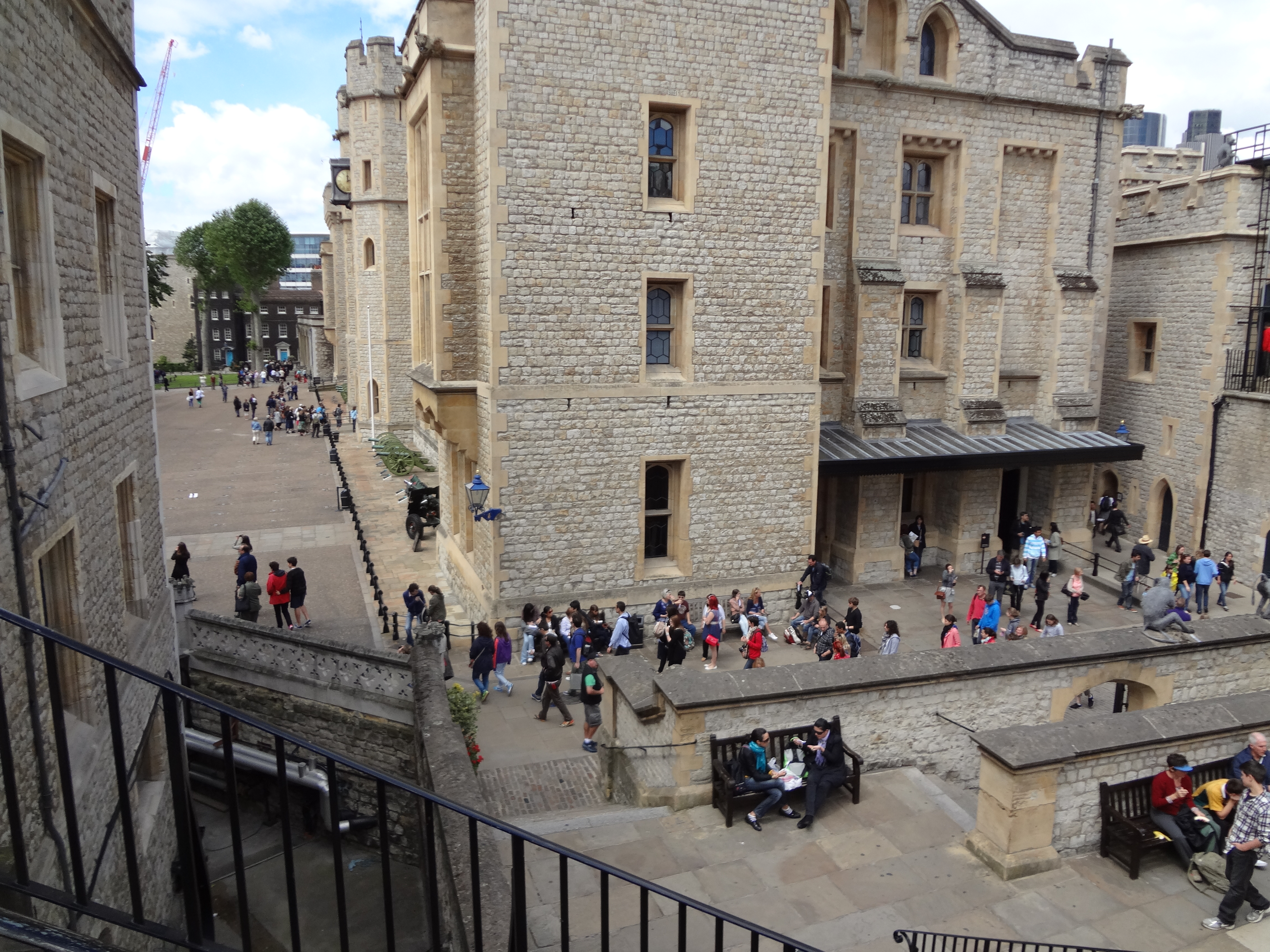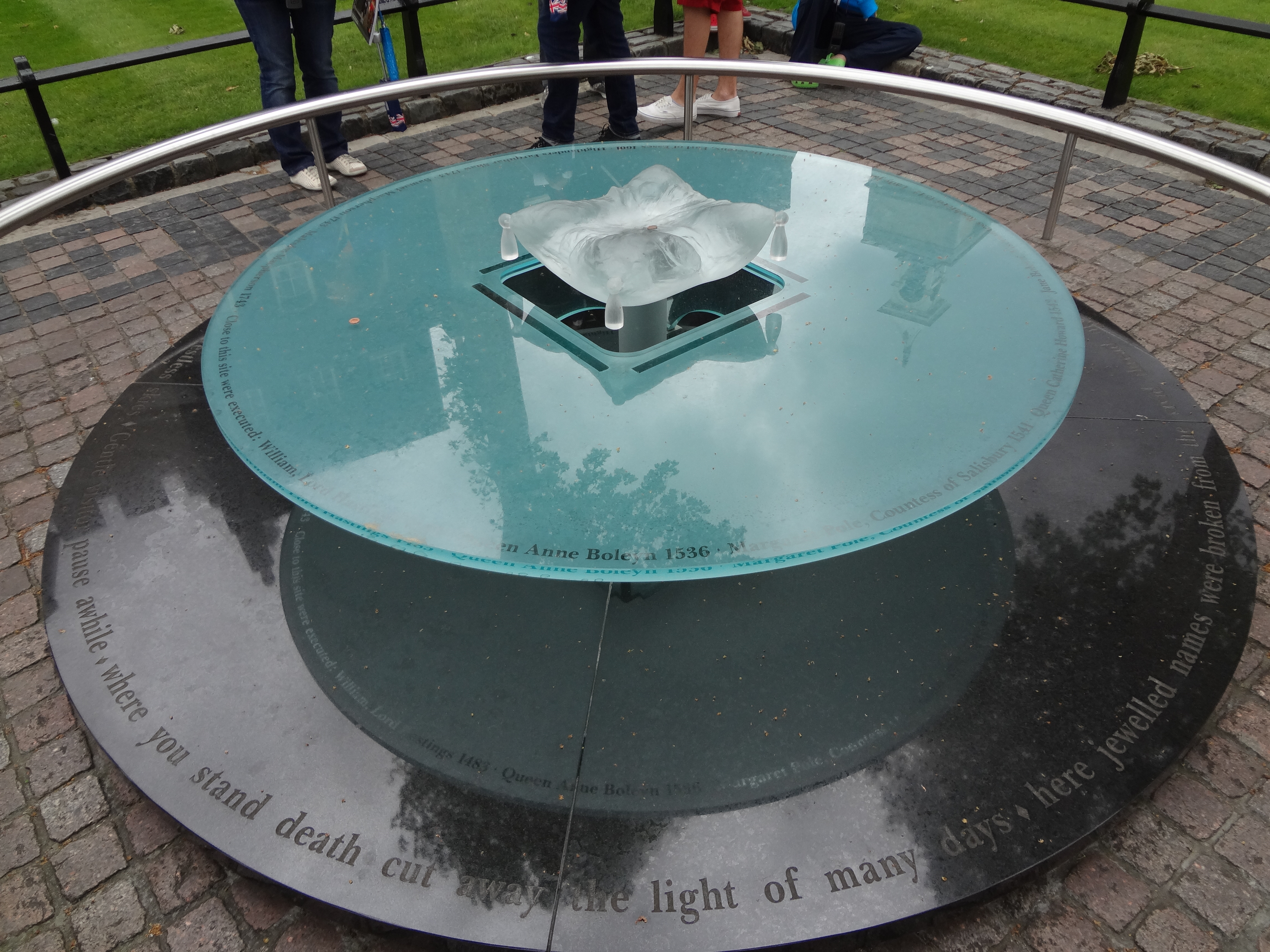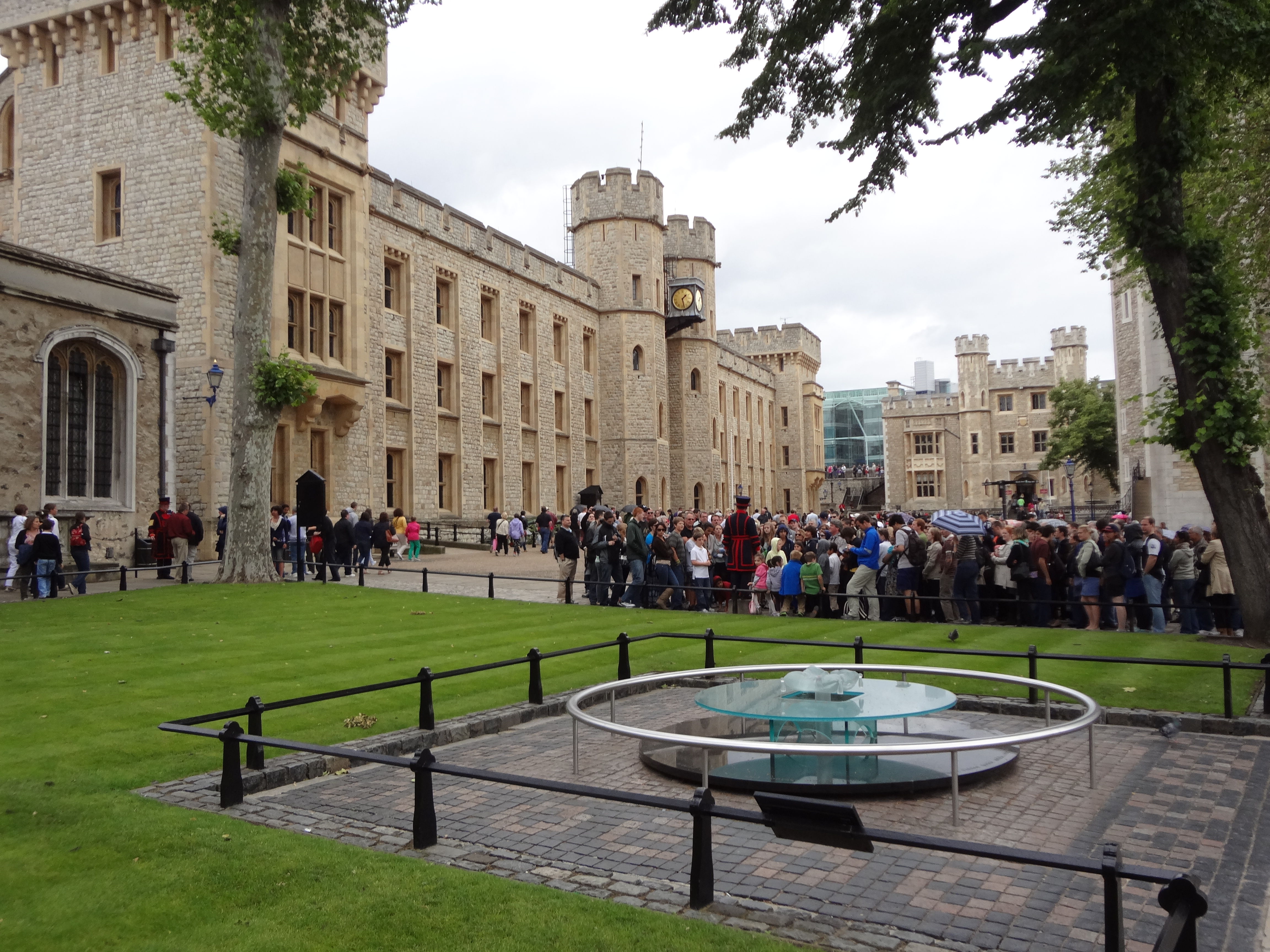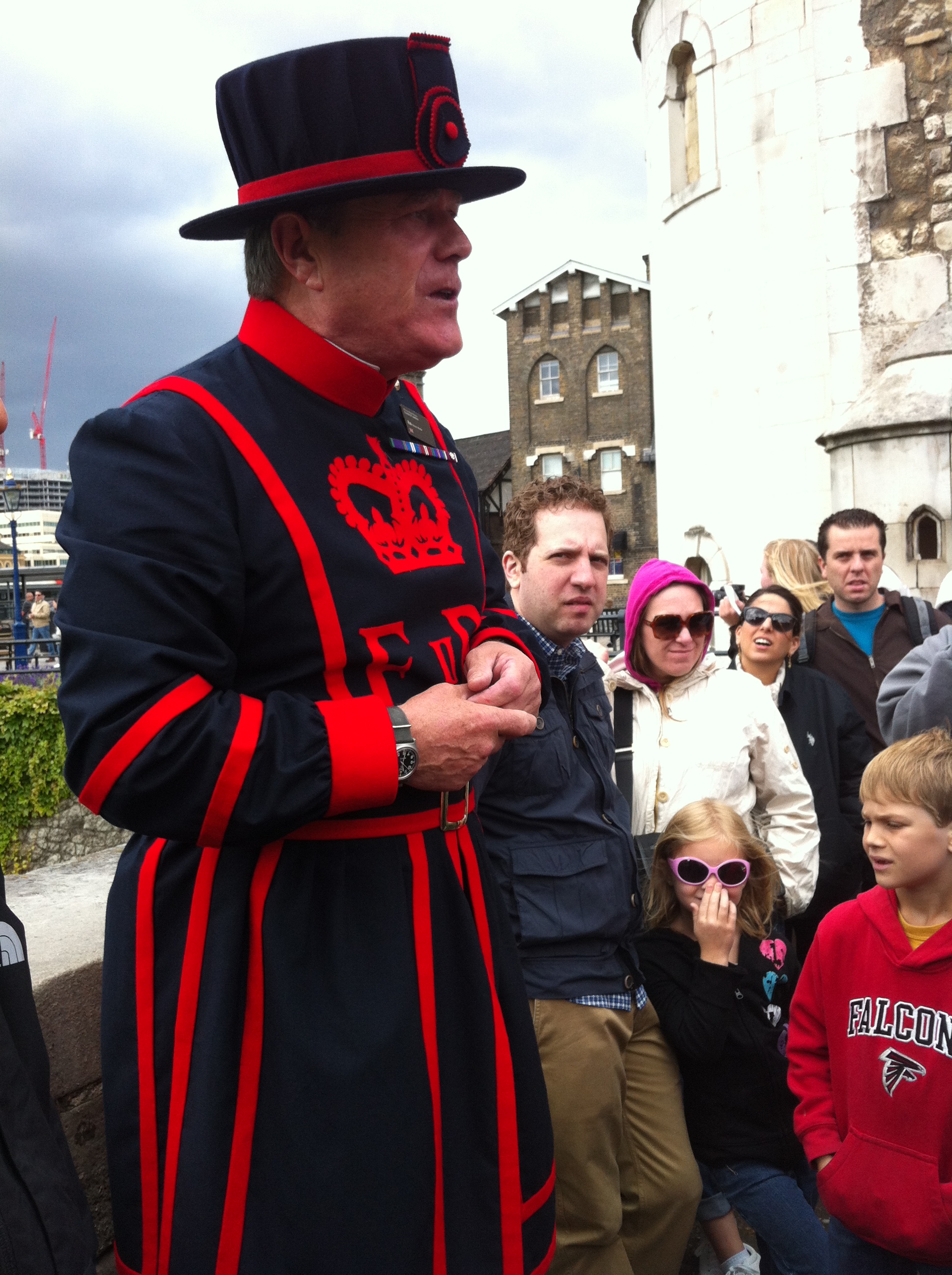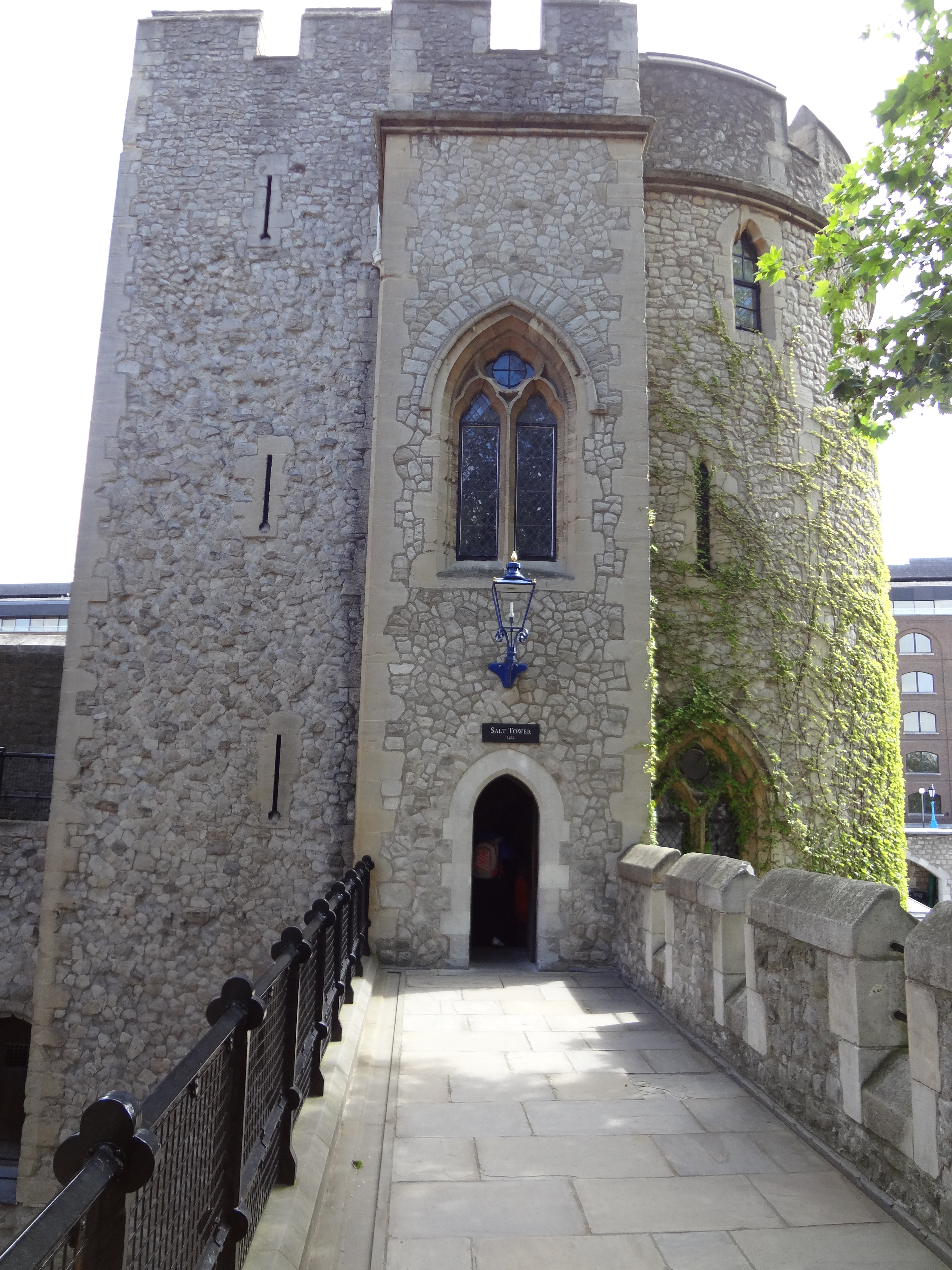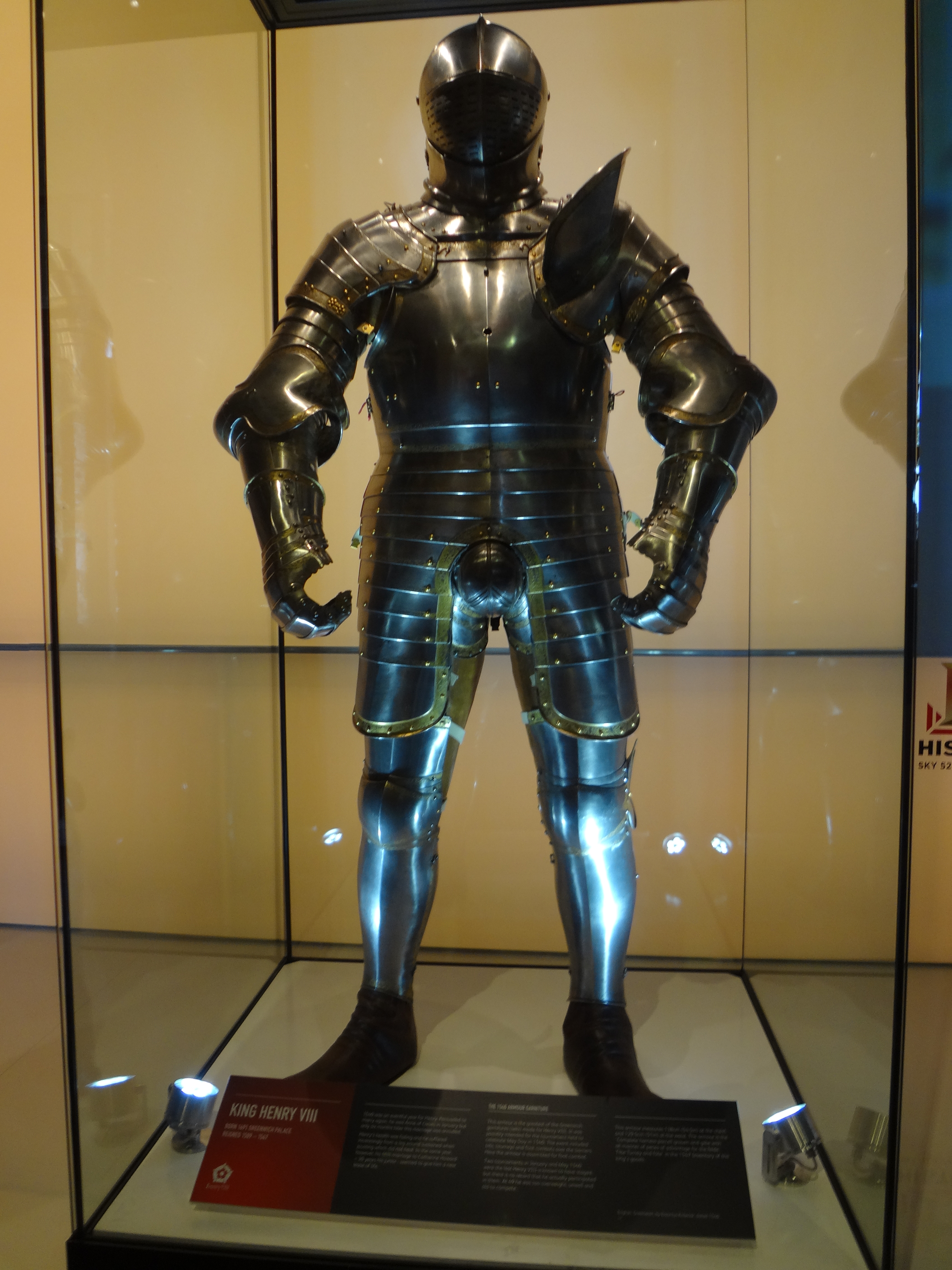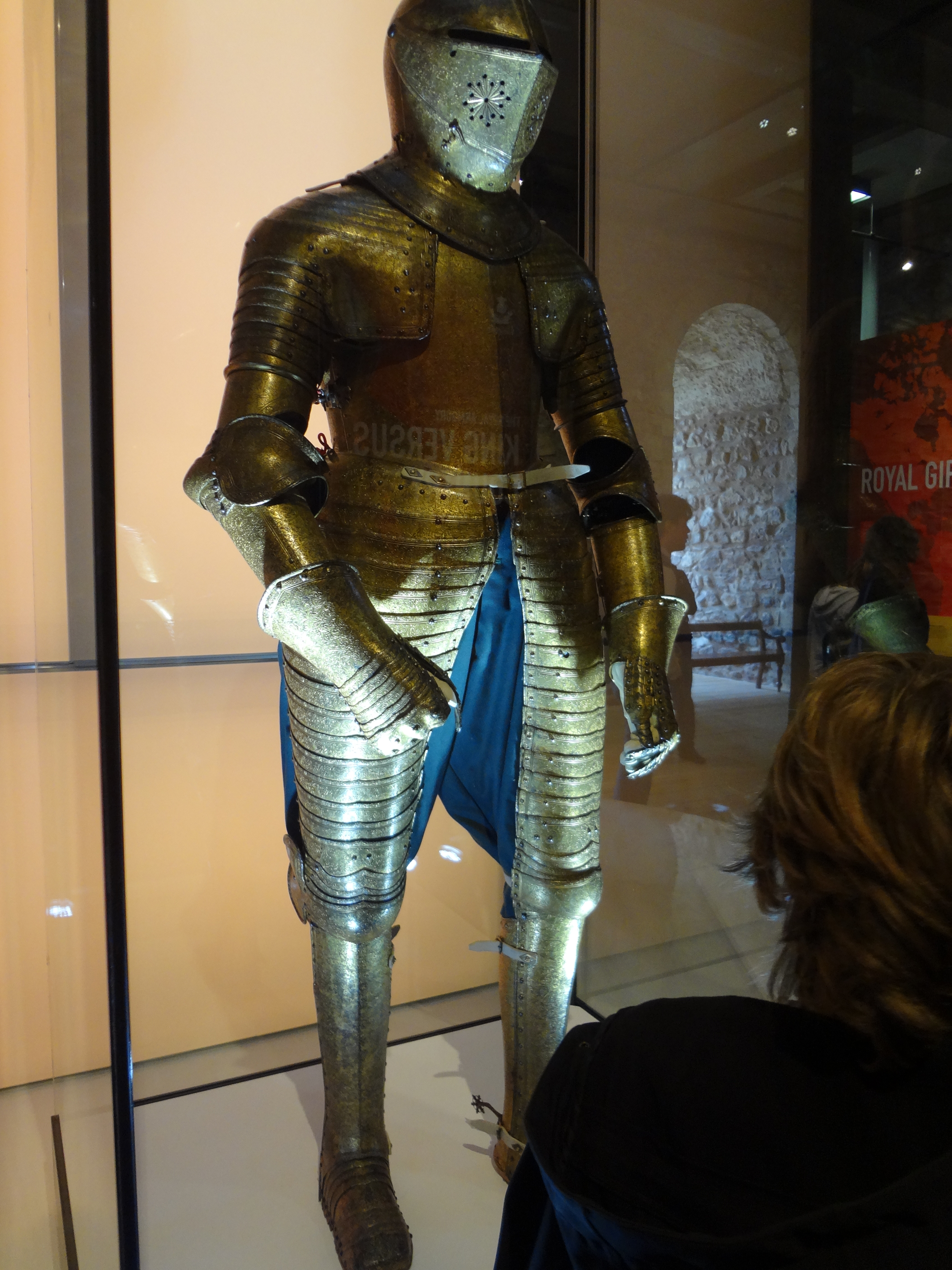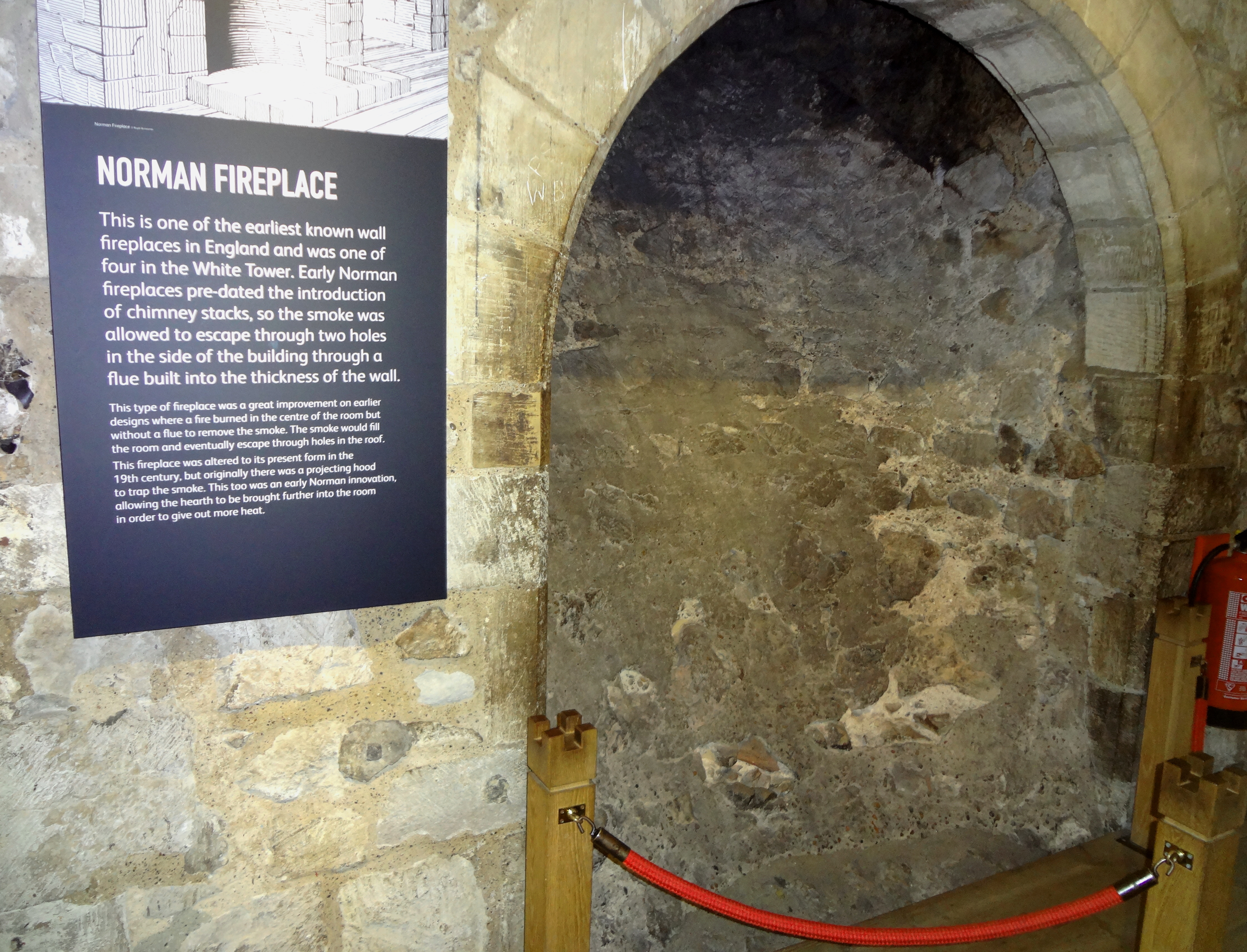The Tower of London is one of the most popular tourist attractions in England with over 2,000,000 visitors a year. It has been a castle, a royal palace, a prison, a mint, an armory, a safe-haven for the crown jewels and a government records office for important historical documents. Some of the original buildings date back to William the Conqueror in 1070 and foundations have been found dating back to Roman times 2,000 years ago.
Location
The Tower of London is on the northwest corner of the Thames River and the Tower Bridge. It is accessible by bus and boat which both drop you off near to the entrance. The nearest Tube, or Underground station, is about four blocks away but still a comfortable walk.
My Experience
It was 40 years between my two visits to the Tower of London. I first saw the royal palace at 16 years old. I recently came across a picture of me leaning over the wall with the Tower Bridge behind me. In 1972 it was a cool old building in a far away country. This time I was expectant, almost a little anxious when I entered the gate to the Tower of London. So much of the history of western civilization occurred here, within these walls. Some great stories happened here and many were not pleasant. The walls of this palace record some of the saddest moments in England’s history.
More than any site I have visited, the Tower of London is an all-day event. Inside there are so many places to explore, events to watch and artifacts to see that to get the most out of this royal palace it would be best to plan a full-day. The crowds are typically larger here than at other tourist locations except Buckingham Palace during the changing of the guard.
I stood on the grounds where Ann Boleyn was executed 475 years ago. She was decapitated for being Henry VIII’s wife when the Catholic Church wouldn’t approve of his desire to divorce. At the same place another Queen, Catherine Howard, was executed for the same reason some five years later as Henry VIII’s fifth wife. Not only were these two innocent women put to death by Henry VIII, but by severing the relationship between the Vatican in Rome and the church in England, and making himself the Church of England’s supreme authority, he began hundreds of years of religious wars in the U.K. This action alone resulted in the death and destruction of people and property up until the present time.
There were as many as 10 people executed within the walls of the Tower of London and dozens on Tower Green or Tower Hill, a comfortable walking distance just outside the north wall where there is a plaque commemorating the spot today. The executions inside the walls of the Tower of London were private, only for royalty and the most prestigious prisoners. The executions on Tower Hill were public with sometimes thousands watching and cheering on the executioner.
During my visit at the royal palace there were staged historical events with actors dressed as medieval characters which the children seem to enjoy. The White Tower at the center of the royal palace contained fascinating artifacts such as the armor of Henry VIII and James I, Oliver Cromwell’s sword, death masks of most of the Kings and Queens as well as cannons and rifles from when the Tower was used as an armory. The crown jewels, both medieval and modern, are on display although no pictures can be taken by tourists for security purposes.
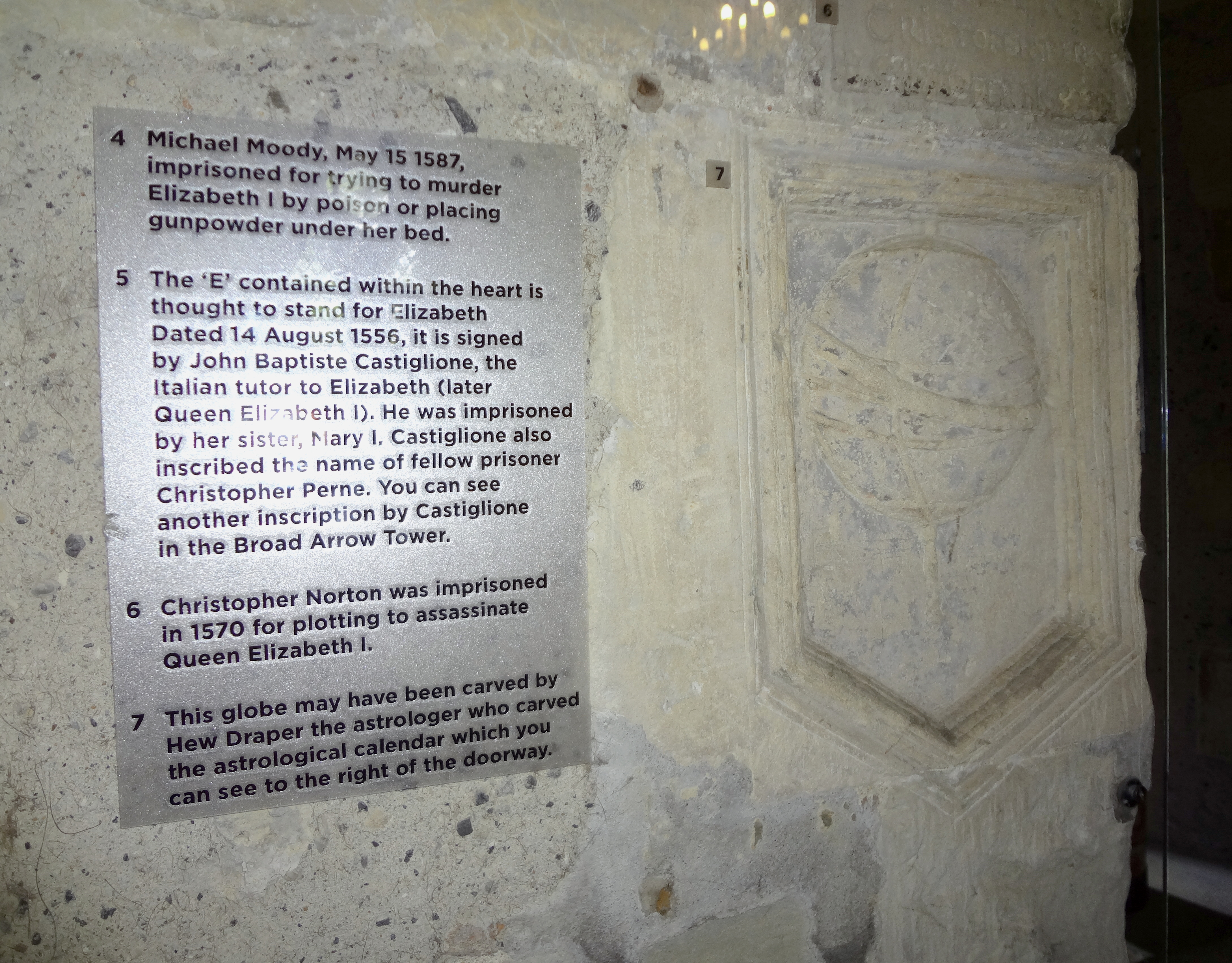
You can still see the words of the prisoners in the towers. Plaques have been placed to make it easier to read.
Prisoners were kept sometimes for years within the various towers. It is possible to still read the musings and writings etched into the walls by famous people who were imprisoned. It takes time for tourists to read, but I found it amazing to read last words or what was of importance to the prisoners. Some of the calligraphy and drawings were complex while others wrote the names of their sweethearts, claimed their innocence or scratched a Bible verse onto the walls.
A structure doesn’t survive over 1,000 years without changes, but if you take the free tour, with the price of admission to the royal palace, your guide will show you how it changed and grew over the centuries. They will also tell you old stories about famous people that happened within the walls throughout the centuries.
The Background and History
In 43 A.D. the Romans first conquered what is today England. In 383 A.D. the Romans left Britain as their empire was collapsing and Roman rule ended. The Angles, Saxons and Jutes, Germanic tribes, opportunistically invaded England from mainland Europe after the Romans left, around 450 A.D., and ruled. In 793 the Vikings first invaded Britain to challenge Anglo-Saxon rule. 300 years later the half Saxon, half Norman (Norman is French/Viking) born King Edward died without an heir. He was called Edward the Confessor because he built Westminster Abbey. Harold Godwinson was named king upon his death betraying an agreement Harold had reportedly made with William of Normandy who believed he had been promised the crown. The Vikings attacked in the north trying to take advantage of the instability caused by the death of King Edward. Harold took his army to the far reaches of north England and defeated the Vikings at the Battle of Stamford Bridge securing, at that time, Saxon rule. He discovered William had landed in the south and pushed his army at breakneck speed after defeating the Vikings. Fighting against an exhausted army William of Normandy won and King Harold was killed at the Battle of Hastings. Willam, Duke of Normandy, now became William the Conqueror, King of England. Saxon rule in England was over.
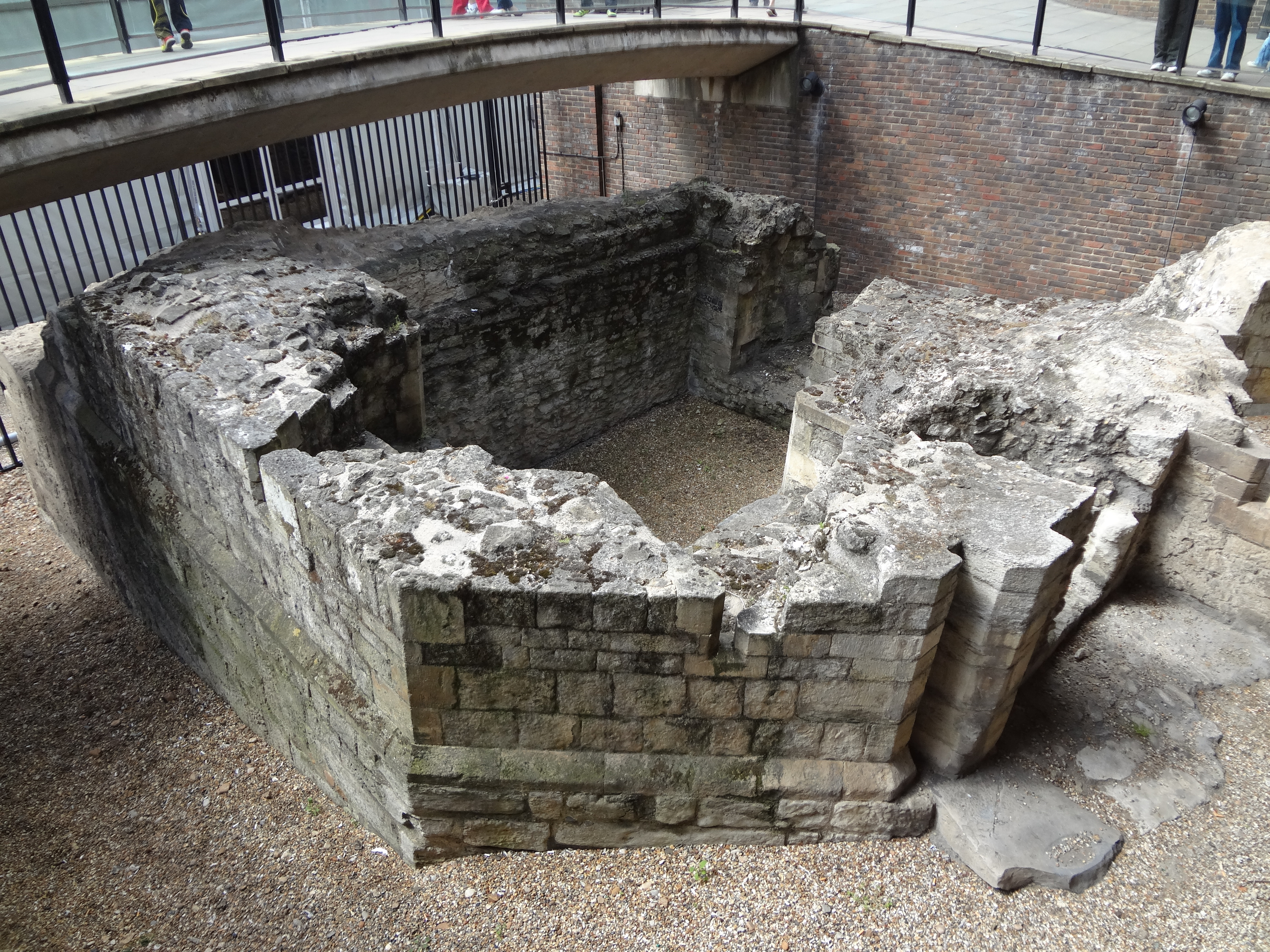
Roman stones were found under the foundation of the Tower of London. This wall is almost 2,000 years old.
William knew he needed to consolidate power quickly so he ravaged the countryside on his way to London. Officials from the city submitted to the conquering William in hopes of avoiding death and destruction. William sent an advanced guard to London to “build a fortress and prepare for his triumphant entry into the city”. After his coronation at Westminster Abbey on Christmas day 1066, William withdrew from the city. He knew his first task was control of the huge and “fickle” population of London.
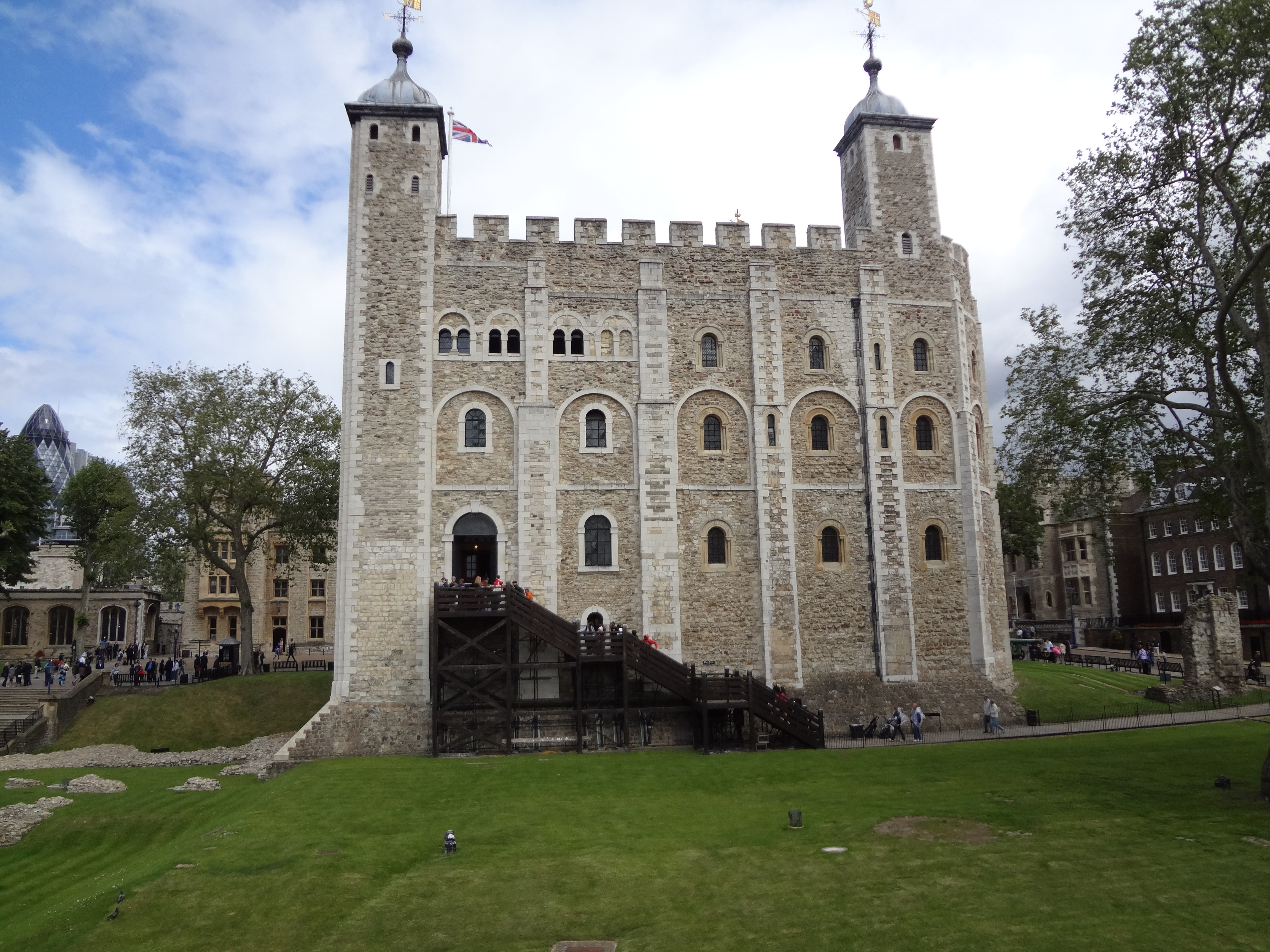
Built by William the Conqueror in the 1070s. The English had never seen a building like it. It could be seen over London for miles.
The Normans built a great stone tower called the White Tower near the site of the old Roman fort. The tower wasn’t like anything ever built in London and sent the city a message of things to come. Norman masons and stones were brought in from William’s native Normandy for the building. The labor to build the tower was provided by the English. The tower dominated the skyline and could be seen for miles.
The Tower of London was never the favorite royal residence or the first line of defense during war. The Tower’s primary function was as a fortress, a stronghold for the royalty and it would remain that way until the late 1800s.
The Medieval Tower of London
Richard the Lionhearted was the first medieval king to update and expand the Tower. He left for the crusades shortly after becoming King in 1189. In his absence the royal palace was doubled in size and reinforced as a stronghold by adding additional defenses. In Richard’s absence his brother John laid siege to the Tower and forced Richard’s men out after their supplies ran out. Upon his return in 1194, Richard regained control. His brother John asked for forgiveness and was even named successor to the throne. When King Richard died, John became King and was probably the first to have exotic animals, such as lions, kept at the Tower. John died trying to keep his throne and left a kingdom in turmoil to his son Henry III. Henry defeated the invading French and dealt with rebelling Barons during his reign. He saw weaknesses in the Tower’s defenses and worked to improve them. He was the first to build a moat around the Tower in 1238.
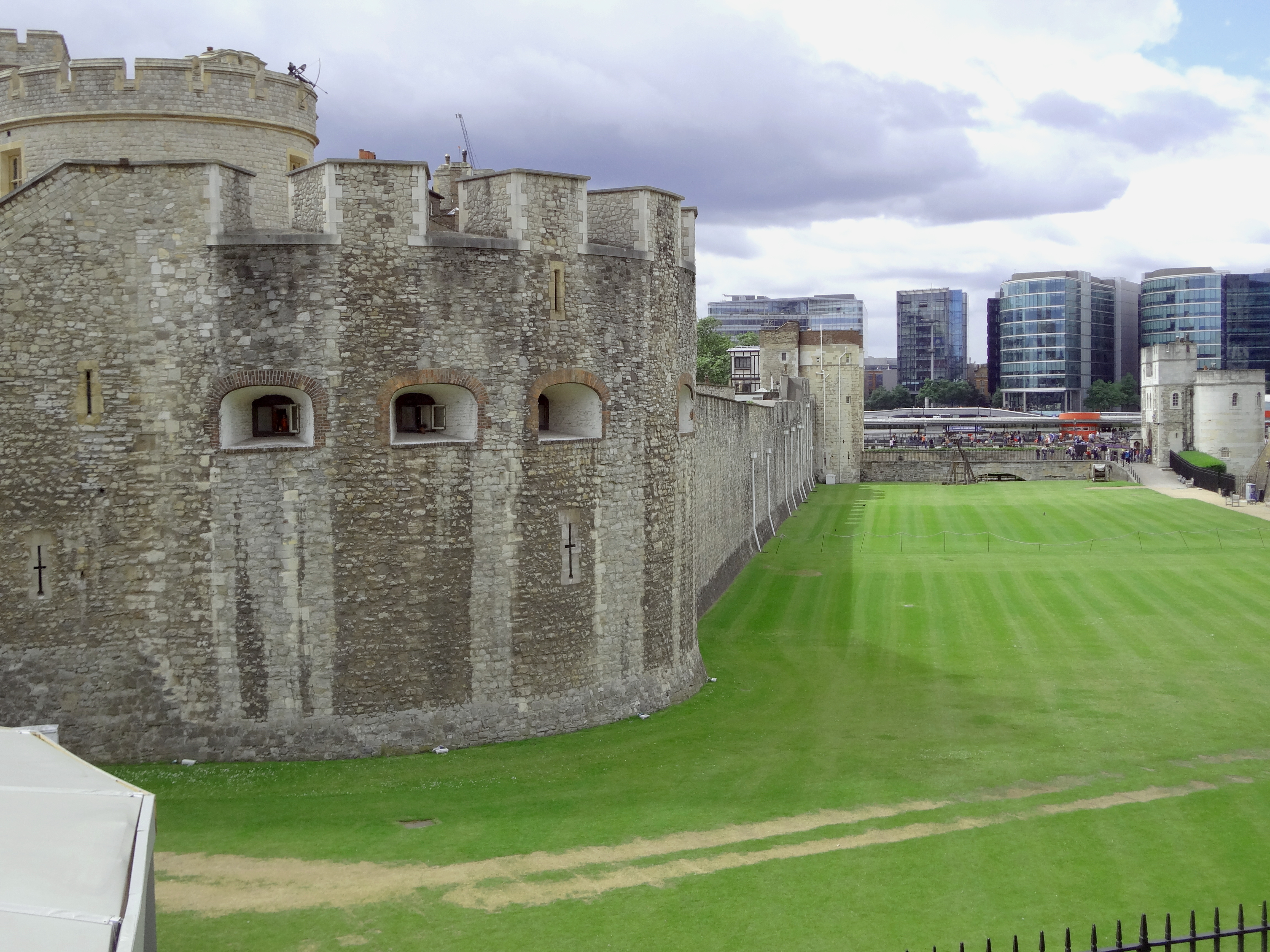
It was a vegetable garden during WWII. At one time the Thames River flowed through to act as a conduit for trash.
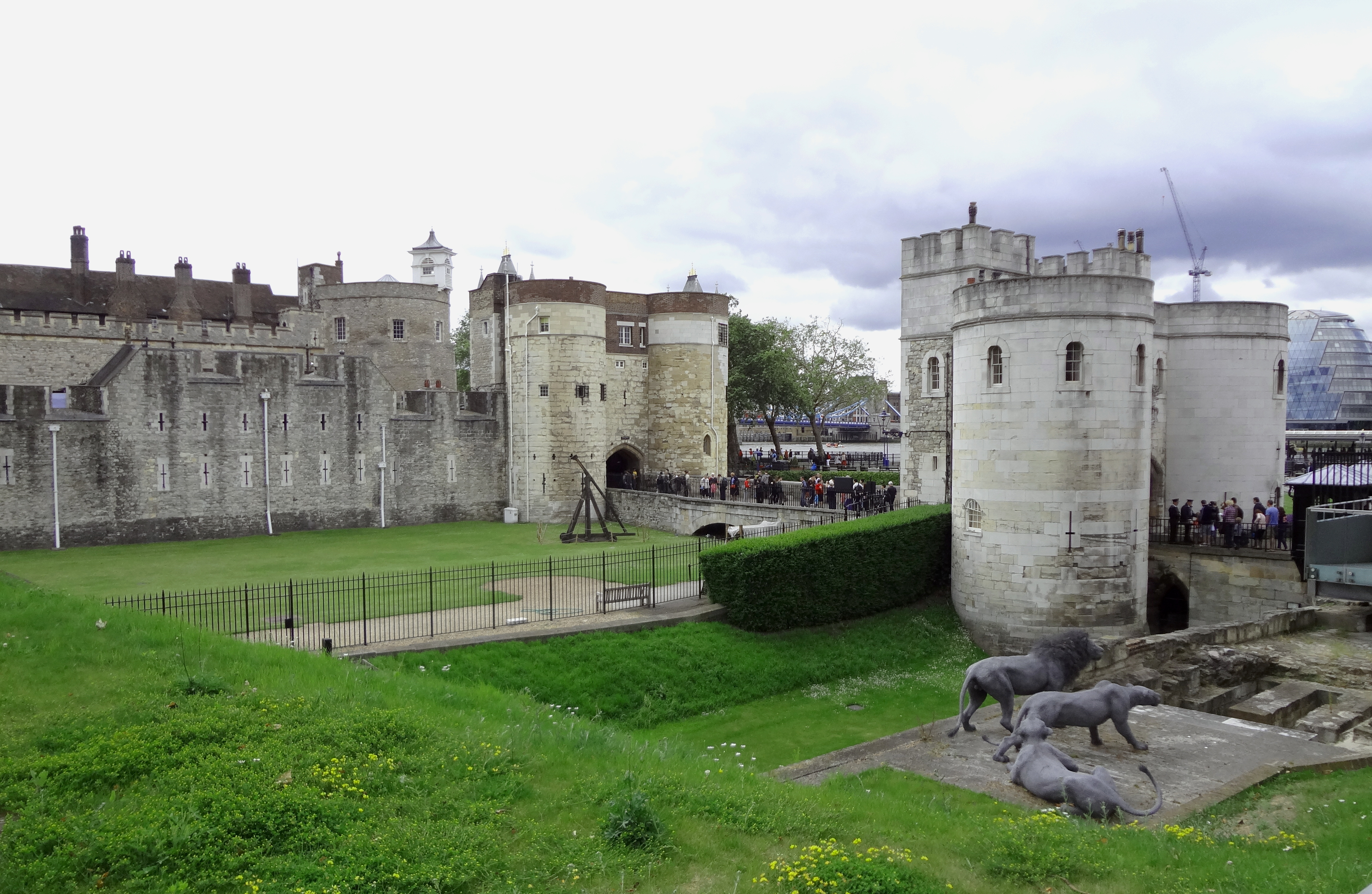
The Tower of London was considered a “concentric” castle with lines of defense within lines of defense. Each could see over and around the other.
King Edward I transformed the castle into the largest and strongest “concentric” castle, with one ring of defenses inside another. The castle had first been used as a prison in 1100 but King Edward was the first to store historic papers and other valuables within its walls. It also became a royal mint during this time. His grandson King Edward III was a successful warrior, like his great-grandfather Henry III and unlike his father Edward II. He captured the kings of Scotland and France and imprisoned both in the Tower. During his reign 10,000 rebels plundered the capital during the Peasants Revolt and entered the Tower but did so unarmed. In 1399 King Richard was imprisoned in the Tower after being forced to renounce his crown.
[youtube=http://www.youtube.com/watch?v=i-dUxs5rw2k&feature=youtu.be]
The Tower had a reputation for being a place of murder and execution. Mad King Henry VI was imprisoned and eventually executed at the Tower. King Edward IV became King upon Henry’s execution. It was upon King Edward’s death that one of the saddest moments occurred in the history of the Tower. His two sons Edward, aged 12 and Richard, aged 10, who were in line for the throne when their father died, went missing never to be heard from again. Their bones were found at the castle during renovation in 1674. The story remains a mystery but there is little doubt murder was committed at the Tower.
With King Henry VII, the Tudor family came to power in England. Henry VIII continued the expansion of the Tower but it was the execution of two of his wives at the Tower for which he is remembered. Henry VIII’s decision to break with Rome and become the Supreme ruler of the Church of England caused a large increase of catholic prisoners in the Tower and saw a rise in executions. His son Edward VI continued the large number of executions until the short rule of Queen Mary I, who returned the country to Catholicism and persecuted protestant leaders. The use of the Tower, as a prison and a place of execution, continued for another 100 years.
The Tower played a key role in the English civil war, fought between the royalists and the parliamentarians. Charles I ended parliament which was a major cause of the civil war. He lost the Tower in a blow from which the royalists did not recover. With the execution of Charles I and with the monarchy abolished, all the gold and jewels were sold and the precious metal melted to provide funds for the good of the commonwealth. After the restoration of the monarchy several years later the Tower’s use as a prison declined even as its use as storage for military supplies and equipment increased.
Under the guidance of the Duke of Wellington in 1852, the aging palace and castle was restored as an important place in English history. Two world wars saw the Tower used once again as a prison and a place of execution. Rudolph Hess, one of Hitler’s trusted generals, was briefly held as a prisoner in the Tower. During WWII bombing damage was considerable and several buildings were destroyed. During this time the dried moat was used for growing vegetables.
Ratings (Castle)
Category Rating: A+
Overall Rating: #3
Comments: Tourists can learn so much about the history of England and the life of its royals by studying the Tower of London. I wouldn’t go to London without taking at least a half day and visiting the Tower of London. It is a “must see” historical site.
